Cars Only Bob Lutz Remembers: The 1983 Ford Ghia Barchetta Concept
Bob Lutz admitted in his book Guts that he “possesses a certain duality of mind,” and he ain’t kidding. After all, how could someone spend a career in an industry built on “the industrial logic of scale” (to borrow a phrase from Sergio Marchionne) while trying to connect new vehicles with the lust centers of the human brain without developing a certain amount of creative schizophrenia? But, as anyone who has ever driven a Pontiac Solstice knows, sometimes compromises are made between the conflicting pulls of lust and practicality… and when those compromises must be made, Lutz tends to err on the side of lust. I confronted him about this tendency in our recent conversation, and rather than accept the criticism, he doubled down on his premise that lust-worthy design is more important than practicality. And he illustrated his point by telling the tale of a long-forgotten concept and its troubled path to production.
The story began, almost inevitably, when I asked Lutz if he had any regrets about the Solstice/Sky “Kappa” program. Did he ever second-guess himself on design decisions made in that program, I wondered. Was practicality unnecessarily sacrificed? Would more usability have had any effect on sales of the Solstice or Sky? After the briefest moment of reflection, Lutz answered with a fairly emphatic negative. But rather than leave it at a simple “no,” Lutz unfolded a parable about product development that began the year after I was born.
Do you remember, we did a two-seat Fiesta roadster at Ford of Europe one time? I forget what it was called… we didn’t call it a Speedster, but it was… I guess it was kind of like a Porsche Speedster. If you Google it… it had a unique body… I think we showed it at the Geneva show… 84 I think.
It was a really neat looking car with a very fast front end. It kind of reminds me of the BMW Z3 because the hood had to stay level for a while to clear the engine and then it dropped off sharply. It was a two-seat roadster with a very short back end… the wheels were all the way in the back. It was cute as all get-out… but the functionality was probably close to zero. No back seat, no trunk, nothing… just a very basic, low-cost, two-place roadster.
Lutz remembered the car, he just couldn’t remember the name. With a little Google wizardry and a lucky stumble across this blog item, I found the name: the Ford Ghia Barchetta. And he was only off by one year… apparently the Barchetta debuted in 1983. He was also right about the looks: in many ways it seems like the inspiration for Fiat’s wildly-successful (and gorgeous) front-drive Barchetta, which was built from 1995 until 2005 with only a brief pause. But now we’re getting sidetracked… back to our story, already in progress, with the first compromise made to the concept:
I wouldn’t let them change the engine placement. I said “if we have a chance of putting this into production,” (which I really badly wanted to do), “we have to keep the Fiesta underpinnings.”
So far, so good. But here’s where the story becomes a parable.
I needed some volume to make a viable program out of it, so I figured we could probably do eight or nine thousand of them in Europe, and we gave it to Ford NAO (North American Operations) and said “what can you do with it?”. They did some Supermarket parking lot surveys and they asked women coming out of the grocery store “what do you think of this?” They said “oh, it’s cute. What would it cost?”. “About eight thousand dollars.” “Oh, that’s a lot of money.” And then [the Ford NAO people] said “aaand, you can have this four-cylinder Mustang convertible for $7,800.” “Oooh,” they said, “well I’ll take that.” So they concluded there was no volume potential in the United States… and of course there was, they were just asking all the wrong people.
This encapsulates why Lutz deserves at least some grudging praise from even his toughest critics: lust is difficult to make a case for in the auto business. Simply trying to convince Ford’s US-market fiefdom that they would benefit from such an unusual vehicle in their lineup was an insurmountable task that he tackled anyway. As the romance and enthusiasm slowly drains away from the world of cars, very few executives risk their careers for exciting products that might not make immediate business sense. Sure, this risk-taking seems less laudable in the aftermath of the bailout, but it’s integral to the cultural power of the automobile. And, as the story continues, we’ll find that if you’re going to take a risk on a niche product, you better really take a risk on it.
Then Alex Troutman at [Ford Asia-Pacific] got interested in it for Asia-Pacific, and went and talked to Mazda. Mazda said “no, we don’t like that one because it’s front-wheel-drive, but we’re actually thinking of doing something like that with rear-wheel drive. And Alex said no, ours has got to be off a Ford architecture.
If Lutz had any regrets about not involving Ford in the creation of the Miata, he didn’t let them show. On the other hand, the missed opportunity had to sting at least a little. After all, if you’re taking a risk on an impractical two-seater, why not go all the way with RWD? And with the benefit of hindsight, involvement in a modern icon like the MX-5 would be a point of pride for any “product guy.” But Lutz only had control over Ford of Europe, and by this point he had even lost control of the Barchetta project. It was about to become everything it wasn’t ever supposed to be.
When Alex went back to the states, he got [the program] going again. It was carefully researched, so it was decided that front wheel drive is OK, but we don’t like the front end. So, OK, the front end got more conventional. Then, “it’s no good with no back seat. People won’t buy a car with no back seat.” Well, OK, we can add a back seat. And then, “oh, there’s no trunk space.” Alright, add a trunk. And so it became that misbegotten little Mercury [Capri], remember that? What a horrible thing. That started out as the Fiesta.
That started out as a beautiful, slick, highly desirable little roadster that would have done well. Functionalizing it wrecked it. And I’ll tell you what: Solstice owners had no problem with that top at all. When you’re into emotional cars, it’s about appearance and how cool is it… it’s the same thing as sports motorcycles. Not necessarily comfortable, not suitable to saddlebags… but they look like track bikes and they’re fun to ride.
I know that not all of TTAC’s B&B will agree wholesale with Lutz’s vision, but the tale of the Barchetta’s transformation into the Capri is instructive. When you have a successful design, and cardesign.ru cites Ford press releases saying the German “Barchetta Club” alone had 10k members at one point, you keep it as pure as possible or you don’t build it all. It’s easy to criticize Lutz as being too uncompromising, but in an intensely collaborative process like car development, the ability to say “no dammit, we aren’t going to compromise on this” is a rare thing. If the world were full of cars that are as practical as they are fun, his approach might be dismissible. Since that’s not the case, this is an object lesson in the trade-offs that create crap like the Capri out of a tiny jewel like the Barchetta.
More by Edward Niedermeyer
Latest Car Reviews
Read moreLatest Product Reviews
Read moreRecent Comments
- Redapple2 I gave up on Honda. My 09 Accord Vs my 03. The 09s- V 6 had a slight shudder when deactivating cylinders. And the 09 did not have the 03 's electro luminescent gages. And the 09 had the most uncomfortable seats. My brother bought his 3rd and last Honda CRV. Brutal seats after 25 minutes. NOW, We are forever Toyota, Lexus, Subaru people now despite HAVING ACCESS TO gm EMPLOYEE DISCOUNT. Despite having access to the gm employee discount. Man, that is a massive statement. Wow that s bad - Under no circumstances will I have that govna crap.
- Redapple2 Front tag obscured. Rear tag - clear and sharp. Huh?
- Redapple2 I can state what NOT to buy. HK. High theft. Insurance. Unrefined NVH. Rapidly degrading interiors. HK? No way !
- Luke42 Serious answer:Now that I DD an EV, buying an EV to replace my wife’s Honda Civic is in the queue. My wife likes her Honda, she likes Apple CarPlay, and she can’t stand Elon Musk - so Tesla starts the competition with two demerit-points and Honda starts the competition with one merit-point.The Honda Prologue looked like a great candidate until Honda announced that the partnership with GM was a one-off thing and that their future EVs would be designed in-house.Now I’m more inclined toward the Blazer EV, the vehicle on which the Prologue is based. The Blazer EV and the Ultium platform won’t be orphaned by GM any time soon. But then I have to convince my wife she would like it better than her Honda Civic, and that’s a heavy lift because she doesn’t have any reason to be dissatisfied with her current car (I take care of all of the ICE-hassles for her).Since my wife’s Honda Civic is holding up well, since she likes the car, and since I take care of most of the drawbacks of drawbacks of ICE ownership for her, there’s no urgency to replace this vehicle.Honestly, if a paid-off Honda Civic is my wife’s automotive hill to die on, that’s a pretty good place to be - even though I personally have to continue dealing the hassles and expenses of ICE ownership on her behalf.My plan is simply to wait-and-see what Honda does next. Maybe they’ll introduce the perfect EV for her one day, and I’ll just go buy it.
- 2ACL I have a soft spot for high-performance, shark-nosed Lancers (I considered the less-potent Ralliart during the period in which I eventually selected my first TL SH-AWD), but it's can be challenging to find a specimen that doesn't exhibit signs of abuse, and while most of the components are sufficiently universal in their function to service without manufacturer support, the SST isn't one of them. The shops that specialize in it are familiar with the failure as described by the seller and thus might be able to fix this one at a substantial savings to replacement. There's only a handful of them in the nation, however. A salvaged unit is another option, but the usual risks are magnified by similar logistical challenges to trying to save the original.I hope this is a case of the seller overvaluing the Evo market rather than still owing or having put the mods on credit. Because the best offer won't be anywhere near the current listing.

















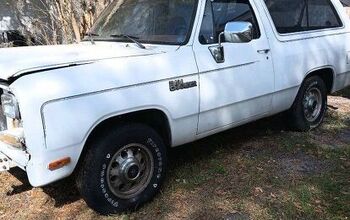

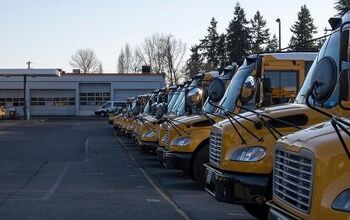

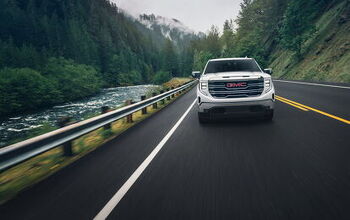
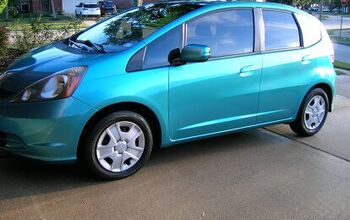
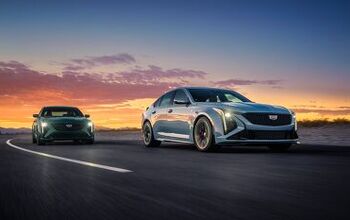
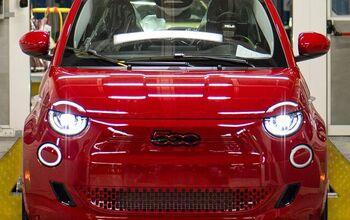

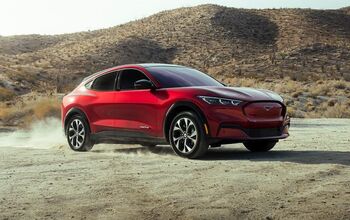

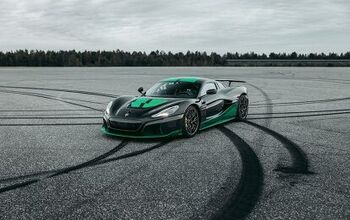
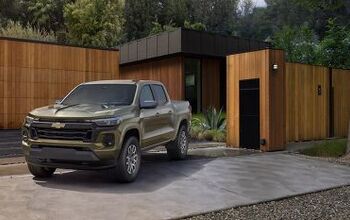
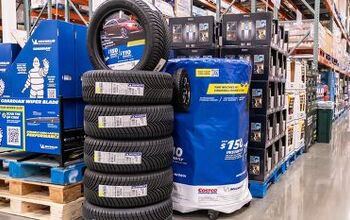


Comments
Join the conversation
In 1987 I had a Cadillac Allante . Is there any possible way you could connect poor Lutz with this soft top? The team who engineered that top were criminals. By the way, I have put up with literally life threatening crap just to be with good looking women ....but that's just shallow me! PS The top on my Solstice was perfectly reasonable to use but I did not like the little furls in the canvas.
The corporate structure of companies the size of Ford and GM prevents anything interesting coming out of them. Committees of middle managers (both engineers AND MBAs) protecting their careers gut any interesting ideas. See the Fiero, Reatta, etc etc. In the late 70s GM was tossing around the idea of a cheap "disposable" car that cost so little that the average consumer would drive it into the ground and replace it every three years rather than maintaining it. By the time the Geo Metro appeared in the 1990s, they cost the same as any other econobox, without the quality.